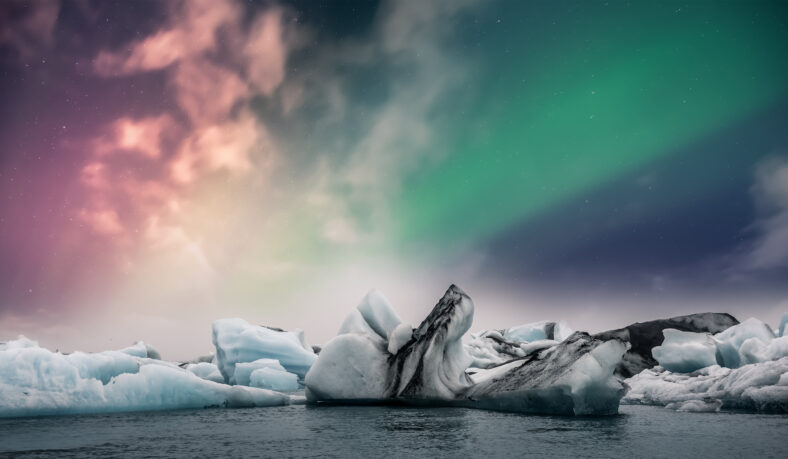This Study Suggests That The Northern Lights May Have Led To The Titanic Sinking

On April 15, 1912, the night that the RMS Titanic sank, the skies over the northern Atlantic Ocean shimmered green with glowing auroras.
Everyone knows that the ship went down after it struck an iceberg, killing 1,500 people onboard, but a study from 2020 suggests that the Northern Lights may have contributed to the disaster as well.
The Northern Lights, or aurora borealis, are formed when the charged particles of a strong solar storm hit Earth’s magnetic field, lighting up the sky with stunning colors. These solar storms can interfere with magnetic signals and radio waves, leading to the luxury ocean liner’s demise.
The Titanic’s navigation system may have been thrown off, placing it on a fatal collision course with the iceberg. According to Mila Zinkova, an independent Titanic researcher, the compass moving by just one degree would make a huge difference. Additionally, the communication system may have been disrupted, which hindered the arrival of rescue efforts.
Many historical accounts described the colorful streaks that occurred on the night of the tragedy. In his logbook, James Bisset, an officer assigned to the RMS Carpathia, which rescued 705 survivors from the sinking Titanic, mentioned the light show.
“There was no moon, but the Aurora Borealis glimmered like moonbeams shooting up from the northern horizon,” he wrote.
A survivor, Lawrence Beesley, noted that the glow from the lights arched across the night sky, with faint beams stretching toward the Pole-star.
Per NASA, solar storms called coronal mass ejections send a wave of electrified particles into space. Sometimes, they are strong enough to reach Earth.
As the charged particles travel along the Earth’s atmosphere, they interact with oxygen and nitrogen to produce red, green, blue, and purple light.

Sign up for Chip Chick’s newsletter and get stories like this delivered to your inbox.
For the most part, the magnetic field protects the planet from the effects of solar storms. But severe space weather can still tamper with magnetic equipment like compasses and the electrical grid.
A solar storm may have pulled the ship’s compass needle in the wrong direction, steering the ship off course. It also affected the Titanic’s radio transmissions. Some nearby vessels did not pick up the Titanic’s signal, and their responses were unable to reach the sinking ship.
The study has made a solid case that the Northern Lights were on display during that fateful night and interfered with the Titanic’s systems. However, some historians don’t think the solar storm was a significant factor in the disaster.
A Congressional investigation in 1912 found that the sinking was due to poor ship design and failure in crew protocol, as well as private citizens jamming the airwaves used by professional ships with their radios.
As a result, the Radio Act of 1912 was passed, requiring all radio operators to have a federal license to limit the frequencies available to amateurs.
You can read the study here.
More About:News